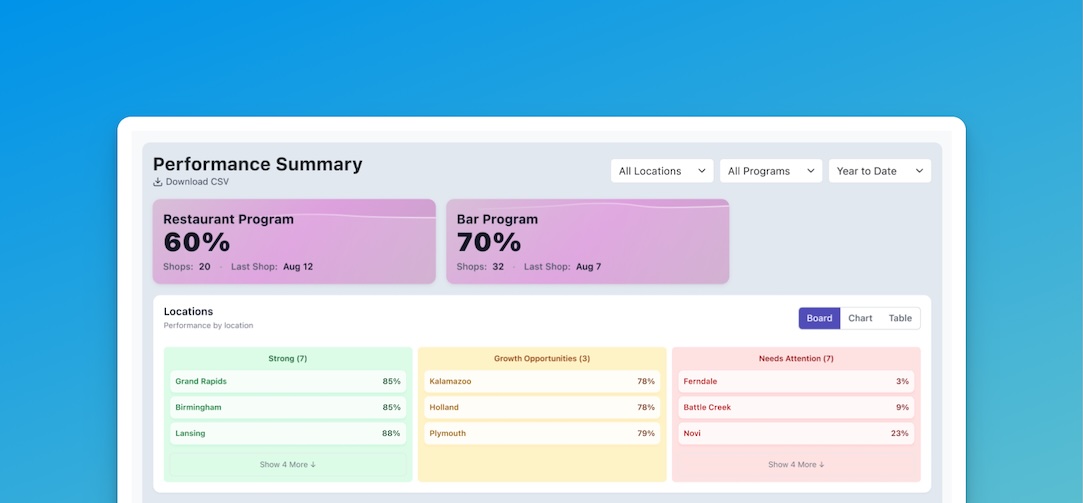
If you need to brush up on customer experience data—what it is how to get it and what to do with it—you’re in the right place. By uncovering and leveraging data about your business you can improve your customer experience (CX) and graduate to the next level of success.
Certainly data can tell you everything you need to know about the state of your business: where you’re nailing it areas that need improvement and even how to make things smoother for your customers. However until you take yourself to class you’ll be stumbling through without a syllabus to guide you.
With that in mind let’s get to the CX data education.
What Is Customer Experience Data?
You likely already have some idea about what customer experience data is—because you know what your customer experience is. Obviously the journey people take with your business is critically important for your mission. From a fresh lead’s first impression with your brand and the hook that lures them in to the point of conversion and the decision to become a repeat customer… All of these points define the customer experience.
Then it’s time for the data part. How many people are interacting with your business? What draws them in—or drives them off? At what point do they commit to a purchase? And perhaps most importantly what is their level of satisfaction after the transaction?
Multiply this by as many people as you’re interacting with and you’re starting to get a feel of what customer experience data constitutes: the key to making the most of your business model.
Types of Customer Experience Data
Now that you’ve got a better picture let’s dig into the details. After all a single satisfied customer’s experience is good data—but it’s just one unique perspective. Undoubtedly there’s a lot more where that came from.
So where do you get the customer experience data points you need? There are two key collection methodologies:
- Direct data. This data comes directly from people who interact with your business whether customers leads or third parties. It includes customer surveys interviews focus groups and mystery shoppers.
- Indirect data. The rest of your data comes from data collection software programs and tools like Google Analytics. You may have already passively collected much of this info from sales numbers website interactions email addresses and more.
Once you have the data the next step is aggregating it—or putting it into one place so you can see the big picture. This could mean putting surveys into a spreadsheet or database for analysis.
Alternatively you can hire an expert or professional agency to assemble the information for you. A CX evaluation company like CustomerOptix will conduct mystery shops at your business compare numbers and provide a report. We’ll show you the areas where your customer experience shines what could use some help and how to strategize improvements.
What Does Your Customer Experience Data Tell You?
While there are many conclusions that can be made from the pile of customer experience data at your disposal here are a few helpful areas to focus on:
- Customer satisfaction levels. How happy are your customers generally speaking? What do they like about your brand? Why do they choose you over your competition? Additionally what commonalities are there in people who are less than satisfied with your business?
- Shopping habits. At what point do leads become paying customers? What key factors qualify your leads for likelihood of conversion? Also what makes a customer come back for more from your business?
- Missed opportunities. Use the information from the questions above. Think about what would make your leads and customers more satisfied. What would make that happen?
Accordingly the answers to these questions—and more—are a direct result of gathered customer experience data. Plus they can help you strategize improvements and create an even better (and more profitable) business model.
How to Strategize CX Improvements from Data
At this point it can be easy to feel overwhelmed or discouraged especially if you’re already seeing key areas you can improve. But don’t stress! No matter where you are in your business journey there are always going to be opportunities for growth. Plus a positive growth mindset will get you a lot further than getting stuck in self-pity.
In view of this the way to make those improvements based on your business is actually a simple five-step formula. Let’s dive in.
1. Identify Patterns in Your Customer Experience Data
With all that data in hand it’s time to start connecting points. Take a hard look at all the information you have and look for patterns. This will become the guide for your next steps.
For example say you find a pattern of less-than-satisfied customers who are purchasing a certain product. With a little more digging you might be able to determine that there are some misunderstandings about what the product is for. This is a completely actionable piece of information and can be rectified easily. Undeniably that’s hugely valuable!
2. Make a Plan
Next determine a goal to handle the identified patterns. Are you planning on fixing them? Or possibly capitalizing on them? Create an objective that can be quantified. That way when you gather more data at the end you’ll know you achieved what you set out to do.
In our example a plan to solve this miscommunication could be quite simple. To illustrate perhaps changing the product description on your website will handle it. Alternatively add something to your FAQ page share some instructions with the product or create a marketing plan to educate potential leads about its uses.
3. Implement Your Strategies
Now that you’ve got your plan in mind it’s time to put it into action. Firstly ensure that everyone involved in the improvement strategy has what they need to make it happen. Plus give yourself—and your team—time to integrate any new protocols. Rushing a strategy could be more detrimental than beneficial.
For example creating a new product description to fix the miscommunication with your customers will require much of your team. At the minimum plan for a writer an editor and a web designer to put all the pieces together and make those changes.
4. Test Test Test
After you’ve given your team some time to settle into the new rhythm it’s important to gather new customer experience data and test your changes. This will tell you if your strategy was effective ineffective or negatively effective. It’s possible that fixing one issue will bring another to light. If you do experience resolution or progress remember to celebrate it and share it with your team.
In our miscommunication scenario a simple data point can tell us if the new product description did its job. Are the same kinds of dissatisfied customers still showing up—or not? If there haven’t been any more complaints that’s great! On the other hand if there are still a few out there it might be time to look at another solution. Try something else. Tweak a phrase or two. See if there are more kinks that can be worked out of your customer experience.
5. Repeat As Needed
As stated there’s always more to be done. So repeat this process on a regular basis. Plan it into your annual calendar. Analyze your customer experience data frequently to monitor changes identify new problem areas as they arise and keep tabs on progress.
As your customer experience improves so will your data points… and your bottom line. But you won’t know for sure unless you can compare numbers from the past. Therefore check your data—and keep checking it—to keep your business growing.
Need More Help?
Now if all this sounds like a lot of work you’re not wrong. Building and growing a business can seem like an overwhelming task. However there are resources out there to take some of the load off. For example CustomerOptix can help you schedule one-off or recurring mystery shoppers to evaluate your customer experience data regularly. You’ll receive comprehensive industry-specific reports with insider tips and strategies for improvement. Plus it takes as little as 10 minutes to set up.
Use Customer Experience Data to Level Up Your Business
Clearly customer experience data is the key to unlocking the full potential of your business. Learn to understand what your customers truly want where their pain points lie and how they interact with your brand. Then you can make data-driven decisions that lead to better customer satisfaction loyalty and ultimately increased revenue. Just remember: it’s an ongoing process. Gathering insights making improvements and refining your strategies based on real-world feedback is part of a healthy growth mindset.
As you continue to analyze and act on this data your customer experience—and your business—will only grow stronger. So don’t wait! Start leveraging your customer experience data today and graduate your business to the next level.
Subscribe to the Buzz
Receive exclusive insights, tips, and customer experience strategies straight to your inbox.







